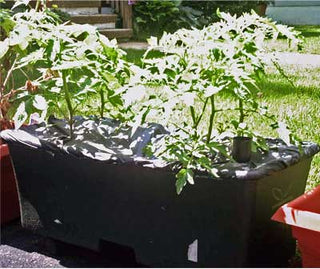
Drying food is a long-established and time-honored method for preserving fruits and vegetables. The basic premise is simple: small pieces of food are placed out in the sun and warm, dry air passing over, under and around the food pulls the moisture from it. Ovens and commercial drying equipment are meant to mimic this natural process.
When foods are properly dried, they can’t support the growth of spoilage organisms like bacteria, yeast, and molds. Well-dried vegetables have almost 90% of their water removed, creating an environment hostile to these spoilage organisms.
To Dry:
The best tomatoes to use for drying are meaty types such as paste tomatoes. Slice tomatoes into halves or thirds if large. If drying outdoors, place skin side down on a screen or tray in an enclosed screen house to keep insects and dirt off the produce. Outdoor drying will take a few days during warm breezy and dry weather. Bring tomatoes in at night to protect from dew. Hot but humid weather is not conducive to drying and it’s recommended to use an alternative method if the humidity is high. If using a commercial food dryer, follow those specific directions that are given with the unit. If using the oven, use the lowest setting possible to maintain a temperature below 65C (124F). Drying in an oven can take as little time as overnight. If the temperature cannot remain below 65C (145F), you should consider the other techniques mentioned for drying. Well, dried tomatoes should be leathery but pliable. Store in glass or plastic jars with tight lids. At room temperatures of 20C (70F), tomatoes should store up to 3 months; at cooler temperatures, they can store for as long as 6-9 months.
To Use:
Pour an equal mix of vinegar and boiling water, or just boiling water, over the tomatoes and let stand from a few minutes to a half an hour until they are soft and chewy. Drain off water and cover with olive oil and garlic. Let them marinate in the refrigerator or room temperature for several hours prior to use. They’ll keep in the oil for about a month. Their concentrated flavor is delicious with pasta or antipasto.


